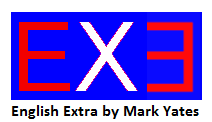
Adjectives and adverbs:
With comparatives and superlatives.
Structure
Most short adjectives have the comparative with "er" and the superlative "est"
e.g. High, higher, highest
Longer adjectives use more and most
e.g Intelligent, more intelligent, most intelligent.
When there are two syllables in an adjective you sometimes have a choice.
It is safer, however to use "more" and "most": "more careful", "most careful"
Good, better best
Adverbs most often have "ly" or ally added to the adjective
high/highly: bright/brightly: catastrophic/catastrophically: industrial/industrially
Although with short adverbs one can often use the same comparative and superlative as the adjective:
He ran quicker than lightning. See who can arrive soonest
If there is more than one syllable use "more" and "most"
He spoke more volubly on the subject of discrimination.
He thinks more highly of you than your brother. The president praised him most highly.
Some adverbs are the same as the adjective: He's a fast driver. He drives fast.
There are some colloquial uses which seem to break the rule: You will see written on road signs "GO SLOW" instead of "Go Slowly" (which is more grammatical but uses more paint!) and probably because of this it is used in spoken English too.
When talking of health "well" is used instead of "good": How is John? He's quite well, better than last week.
Contrast this with: How is John at football? He's good, better than most of the team.